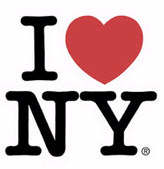I *Heart* New York [Code Enforcement]
Contributions to this post were made by Nadia Washlick, a Cozen O'Connor intern.
One of the most under-discussed and under-valued aspects of green building law is regulatory enforcement. Most of the discussion among experts, myself included, tends to analyze new laws and new incentives as they develop. Frequently, these new legislative and regulatory initiatives pay little attention to the implementation and enforcement requirements that are required for realizing the energy efficiency and environmental benefits the regulations were intended to foster.
New York's Greener, Greater Buildings Plan compliments its sweeping new regulatory initiatives with recognition of and attention to code compliance and enforcement.
Released in 2007 and designed by Mayor Bloomberg, PlaNYC has brought together over twenty-five city agencies to collectively equip the city for one million more residents, bolster the economy, fight climate change, and enhance the quality of life for all city residents. Most importantly, these agencies are working hard to enforce the regulatory changes necessary to achieve these goals.
The City Counsel believes that focusing on buildings will help achieve most of these broad citywide goals as buildings account for almost 80% of greenhouse gas emissions, 94% of electricity use, and 85% of potable water consumption. In December of 2009, the City Council passed four laws known as The Greener, Greater Buildings Plan (GGBP). Collectively, these laws require energy efficiency upgrades and energy transparency in large existing buildings, including annual benchmarking, energy audits, retro-commissioning, lighting upgrades, and sub-metering of commercial tenant space. The City Council believes that these laws will reduce GHG emissions by at least five percent citywide by 2030. In addition, GGBP will save New Yorkers more than $750 million per year in energy costs and create around 18,000 construction-related jobs, thus helping to bolster the economy.
Needless to say, PlaNYC is attempting to transform the construction industry in New York City. This daunting task requires developing new regulatory procedures, defining new terms, and codifying these procedures. The New York City Green Codes Task Force, led by Urban Green Council, was established to develop new regulations, amend current laws, and provide new rules for enforcement. The task force consists of more than 200 experts in design and construction and has the duty of developing rules to enforce these new laws. It has already developed over a hundred proposals to modify City codes and regulations that impact buildings or hinder green building practices, twenty-two of which have since been adopted. Furthermore, the task force now requires progress inspections during the construction period, as well as energy analyses and drawings from engineers and architects before construction begins to prove the designs meet current energy code requirements. The task force aims to achieve 90% energy code compliance by 2017 through both stringent enforcement and energy code training for designers.
New York City was recently ranked number seven on a list of the nation’s top ten most “climate ready” cities. In coming years, the city’s ranking is likely to rise as PlaNYC comes into effect. With such rigorous enforcement, it is no wonder why PlaNYC has been deemed “the most comprehensive set of efficiency laws in the nation.” If successful, the plan will surely be a blueprint for other cities hoping to achieve climate readiness.


 Shari focuses on energy, environmental and building code policy, representing international companies, non-profits and trade associations in their policy and communications campaigns
Shari focuses on energy, environmental and building code policy, representing international companies, non-profits and trade associations in their policy and communications campaigns

